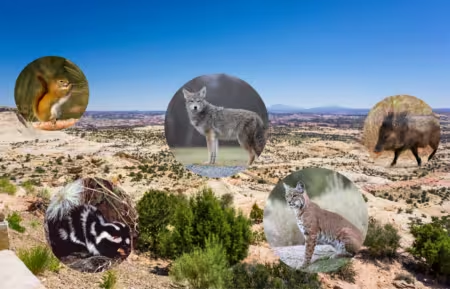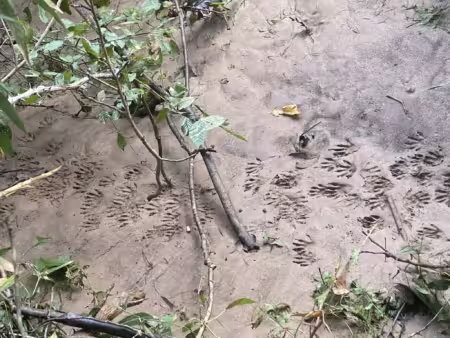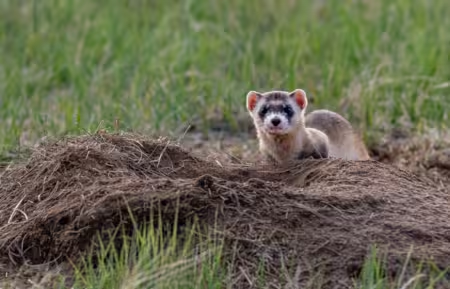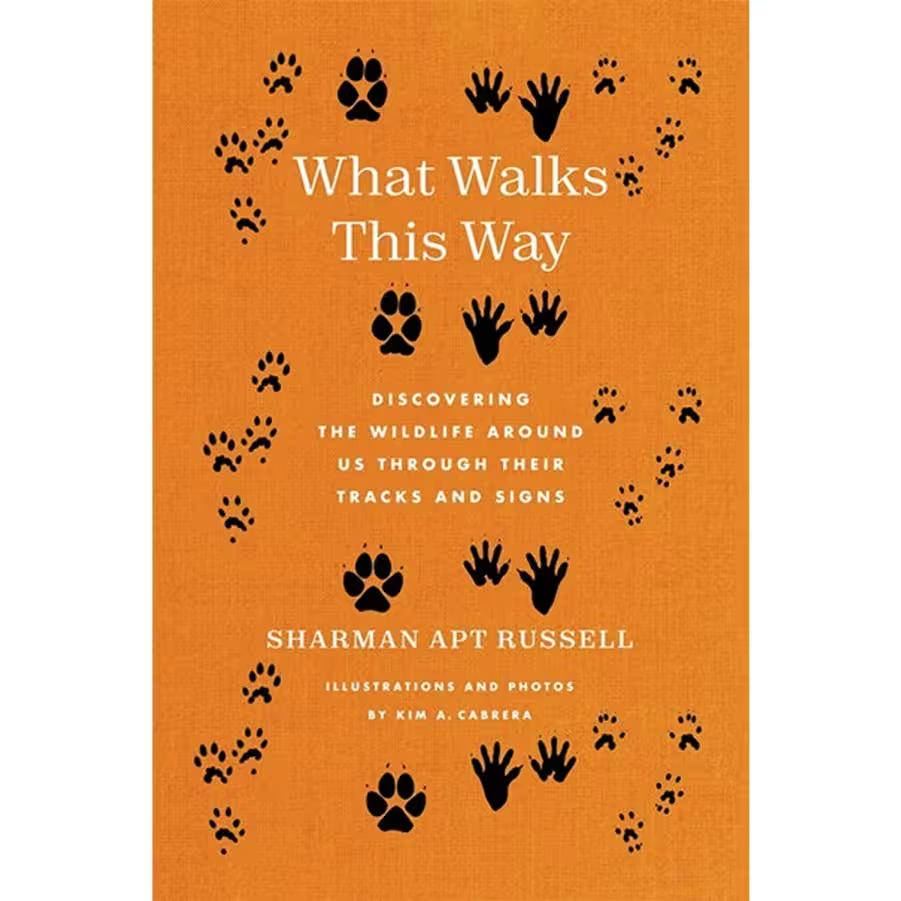Wildlife tracking is one of the most elusive naturalist skills to learn. Although our oldest ancestors relied on tracking skills to survive, many modern folks have a hard time with it. Unlike birdwatching, where a simple pair of binoculars (and sometimes not even that!) is enough to enjoy dozens of species in an afternoon walk, finding tracks can be a challenge, let alone interpreting them. While there are hundreds of great field guides for birds, tracking guides are more rare, and can be difficult to learn from on your own. With this added barrier to entry, many nature-lovers may shy away from tracking as a way to connect with the outdoors. Sharman Apt Russell, an award-winning nature writer based in the American Southwest, helps us bridge that gap with her new book, What Walks This Way.
Not just a field guide

From the start of the book, Russell is clear that What Walks This Way is not a textbook or tracking guide. Been there, done that; there are plenty out there, and she has something more in mind. In this quick but informative (less than 200 pages) read, Russell not only teaches us loads about tracking North American mammals, but also about major groups of these animals, their life history, and their conservation. Most comforting to me as a beginner tracker, she provides context for different tracking skills, including her own experience trying to pick them up. Learning from the book is easy, and it feels less like studying and more like sitting in the car with someone, swapping nature stories on the way to a nature walk.
Reading this book, I felt like I was learning about tracking directly from another nature-lover. It wasn’t nearly as intimidating as trying to pick up track and sign skills on my own.
10 key signs of wildlife to look for in nature
It’s important to consider why books like What Walks This Way are so important. While it’s easy to see, hear, and carefully study the subjects of your interest if you’re a birdwatcher, a botanist, or a bug-enthusiast, mammals tend to make themselves scarce. Russell explains early in the book that mammals, despite being some of the most iconic wildlife in the world, are often deliberately keeping themselves hidden from us, and not without good reason. Meanwhile, mammals communicate with each other on wavelengths of scent and marking, languages that we need to learn on our own since they don’t come naturally to us. Languages that Russell helps to teach us in this book. By learning track and sign, you can access a whole corner of nature you may never have otherwise experienced.
A closer look at American mammals

What Walks This Way is built around getting to know some of North America’s “usual suspects” for mammal tracks, in other words, the animals most likely responsible for any sign you might come across. Unlike many other tracking guides, she focuses on introducing us to the animals themselves in addition to those tracks. From my point of view as a scientist trained in animal behavior, I think this is an important move that sets this book apart. By better understanding the animal, its life history, its behaviors and motivations, we can better “read” and interpret any tracks that we find.
The book is organized into chapters focusing on these usual suspects: coyotes, foxes, wolves, mountain lions, skunks and their relatives, raccoons, bears, and so-on. In each case, we enjoy stories about their history in North America, including past efforts toward their conservation or eradication, their (often complicated!) relationship with people, and the crucial nitty-gritty of their behavior and life cycle.
Read more: What is a life cycle?
I came away from What Walks This Way with more cool anecdotes and context around some of the most common mammals in my area in addition to some handy new skills and mnemonics for improving my own tracking. Being even just a bit more familiar with these species and their daily activities has made me more confident about practicing tracking on my own outdoor excursions and given me the “bug” to delve further into tracking.
Trail mix: Stories and Science

One of my favorite things about the book is how Russell blends scientific facts from animal behavior, mammology, and geology with heartfelt stories from her time out in the field. Much of the book is like opening up someone else’s carefully kept nature journal and perusing their outdoor adventures. Russell takes us along into wild (and some not-so-wild!) outdoor spaces in the American Southwest, describing her own experiences and reactions to witnessing or tracking special events in nature.
Outdoor Tips: How to describe natural places like a naturalist
Instead of banishing the important technical details of tracking to an appendix at the end of the book, she skillfully weaves them into the fabric of her narrative stories. I found myself fumbling for a pen at regular intervals to jot down useful advice and tidbits in my own nature journal while mid-way through one of her stories. Further interspersed with the books’ narrative, info boxes share the type of helpful diagrams and short, concise technical guidance that I’d hope for in a textbook. The result? I learned a lot from this book while also genuinely enjoying another person’s take on the wildlife of my home continent.
Read more: How to Keep a Nature Journal

Although the book focuses on North America, many of the animals described have close relatives throughout the world. For example, the wolverine, Gulo in Nature‘s mascot, is found in Eurasia in addition to North America. The richness of tracking tips and nature facts to be found in this book will be helpful to readers throughout the world, but especially those in Central and South America, Europe, and Asia where many closely related species are common.
13 Wild facts about wolverines
A Call to Action

Weaved in with this tapestry of personal stories, science, humor, and zany characters human and four-footed, Russell also communicates an important conservation message. In the 21st century, we live in a time of extinction and ecological decline, with more species disappearing forever than any other time in human history. In learning the stories of these animals and how they make a living in increasingly human-dominated landscapes, we also gain a deeper understanding of the threats that they face in our modern world. For example, how roadways and cities isolate populations of bears from one another, making them vulnerable to inbreeding and keeping populations small.
Read more: Why is it bad when species go extinct?
Russell describes these threats with a respectable earnestness, sticking to the facts while explaining the depth of the problem. At the same time, she makes us question whether this loss and destruction of our natural world is even necessary. Above all, What Walks This Way communicates our kinship with the many other mammals with which we share the world. Stories about how our ancestors interacted with them, or how similarly our feet and legs operate (the product of our common relatives millions of years ago), remind us that the disappearance of these animals is a loss of a neighbor.
In learning about them, we are taking a first step toward saving them. By helping us look eye to eye with foxes, bears, opossums, and squirrels, by introducing us to the character of these distant, fascinating cousins, Russell issues a powerful call to action. I hope you’ll take the time to hear her out, and enjoy a new way to connect with the outdoors in the process.
You can pick up your own copy from Bookshop or Amazon below!
Bookshop.org (Support local bookstores!)
Amazon
Thanks for reading our review of What Walks this Way!
Do you have other favorite nature books that you’d like to see featured? We’d love to know about it! Let us know in the comments or using the Contact Page. As always, if you enjoyed this post, please share with friends using Social Media.

